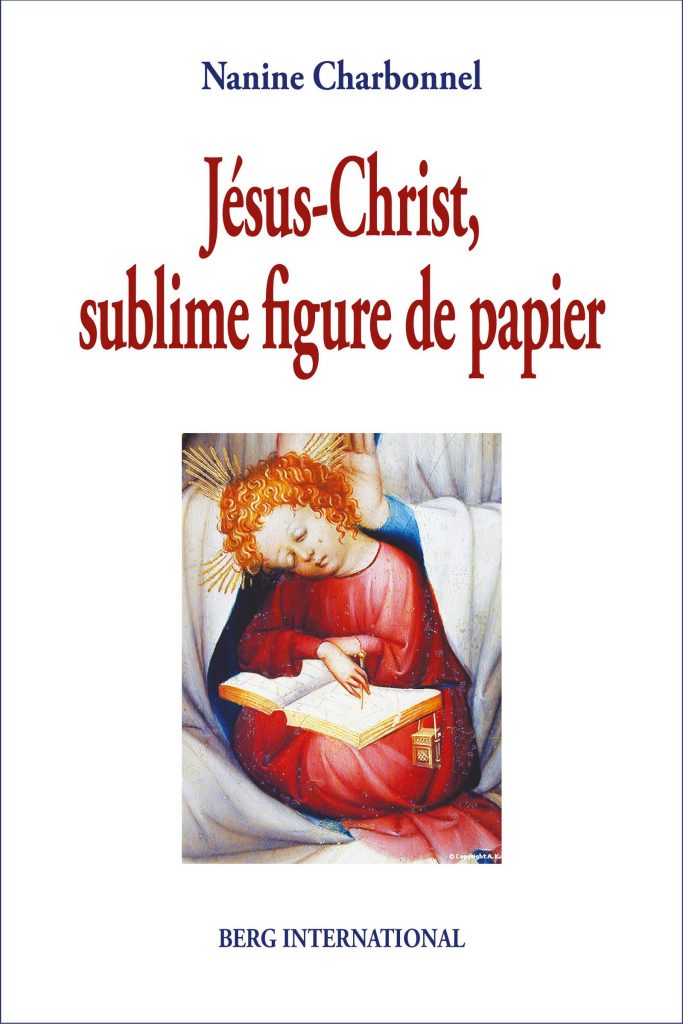
Last year I posted my understanding of Part 1 of the French publication, Jésus-Christ, sublime figure de papier. See Charbonnel: Jesus Christ sublime figure de papier for the ten posts covering that introductory section of Nanine Charbonnel’s book. Anyone who read through those posts would have realized that they were preparatory for what they expected to read about from the book’s title. They would also have begun to appreciate that there is much more to understand about the background to any “biblical” writing than a layperson’s or generalist’s knowledge will prepare them for. It may be some weeks (even months?, god forbid!) before I resume my chapter by chapter posts on the second half of Charbonnel’s work but in the meantime here is some background and overview of what is to come.
The author
http://charbonnel.populus.org/rub/2
A specialist in hermeneutics, Philosophy Professor Dr Nanine Charbonnel (University of Strasbourg, France) published various books among which …
- Philosophie de Rousseau (Rousseau’s philosophy), 3 vols., Aréopage, 2006 ;
- Comme un seul homme. Corps politique et Corps mystique (Together as one. Body Politic and Mystical Body), Aréopage, 2010 ;
- Critique des métaphysiques du propre. La ressemblance et le Verbe (Critique of the literal sense in metaphysics. Similitude and Logos), Hildesheim / Zürich / New York: Olms Verlag, 2014;
- Jésus-Christ, sublime figure de papier (Jesus Christ as a sublime paper persona), Paris : Berg International, 2017.
I. A few words by the French publisher
Nanine Charbonnel’s major points
Her book provides a deep insight into Jesus as a literary construct. In no way is it a diatribe against Christianity, nor the debunking of a hoax but an apt introduction to Jewish culture and the Hebrew bible which highlights the devices underlying the gospels as unparalleled written masterpieces. This book is based on an articulate academic research conducted by a philosopher well aware of the Christian tradition and culture and keen on what Christianity has brought to Western civilisation.
For quite a few centuries, critiques who, in their own right, are reluctant to believe in a God who was made Man, have fallen back on a seemingly simple distinction between the ”Jesus of History”, about whom nothing is known, and the ”Christ of faith” who would only depend on a confessional affirmation. This standpoint actually leads to a deadlock and we had better look for another kind of approach. It sounds more consistent to consider how the gospels fit in the Hebrew-Greek midrashic tradition. Everything takes place in the text and only in the text, in keeping with the Hebrew Holy Scriptures in which words and reality are the two sides of the same coin. Therefore nothing is to be put aside in what the Gospel characters are said to do, including the miracles they are supposed to operate since this is part and parcel of their identity. On the other hand, whatever they do is a form of accomplishment – within the text – of what is adumbrated in the Hebrew Bible. As far as the Jesus character is concerned, his name – Yeshua – stands for Salvation and embodies both the Jewish people and the presence of YHWH within his people.
In her book, Nanine Charbonnel shows that the evangelists wrote out … dramatized portraits with no consideration of their historical existence, which cannot be understood within the framework of legendary fiction or other traditional literary genres. The gospel narratives are thoroughly symbolic and composed within first century Judaism. The belief in a historical man called Jesus is mainly due to a hermeneutic confusion, i.e. what was actually figurative came to be read literally. The multiplicity of languages used in those days increased that misunderstanding. We are therefore invited to re-examine those unique masterpieces.
II. A brief presentation of my research, THE GOSPELS AS MIDRASH
